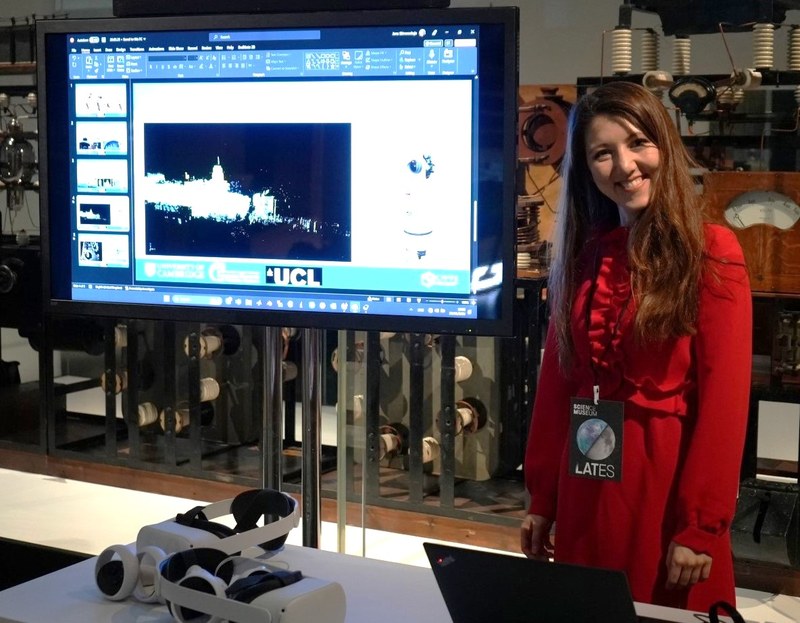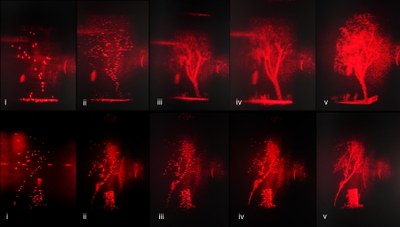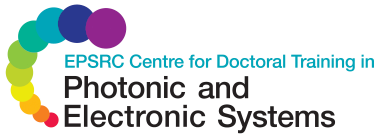
3D holograms could help us see road hazards
New research has led to an augmented reality head-up display that could improve road safety. Jana Skirnewskaja, doctoral researcher on CEPS CDT programme, is developing new in-car technology that could help drivers see hazards.
The new system can effectively ‘see through’ objects to project holographic representations of road obstacles that are hidden from the driver’s field of view, aligned with the real object in size and distance. For example, a road sign blocked from view by a large truck would appear as a 3D hologram so that the driver knows exactly where the sign is and what information it displays.
Improving road safety
The 3D holographic projection technology keeps the driver’s focus on the road instead of the windscreen and could improve road safety by projecting road obstacles and potential hazards in real time from any angle. The results are reported in the journal Advanced Optical Materials.
Traffic accidents claim 1.35 million lives and cause up to 50 million injuries each year. Technology could be used to reduce these numbers and improve road safety, in part by providing information to drivers about potential hazards.
Currently, this is mostly done using head-up displays, which can provide information such as current speed or driving directions.
Jana Skirnewskaja at the University of Cambridge said:
The idea behind a head-up display is that it keeps the driver’s eyes up, because even a fraction of a second not looking at the road is enough time for a crash to happen.
However, because these are two-dimensional images, projected onto a small area of the windscreen, the driver can be looking at the image, and not at the road ahead of them.
Keeping drivers’ eyes on the road
For several years, Jana and her colleagues have been working to develop alternatives to head-up displays (HUDs) that could improve road safety by providing more accurate information to drivers while keeping their eyes on the road.
The team developed an augmented reality holographic point cloud video projection system to display objects aligned with real-life objects in size and distance within the driver’s field of view.
The system combines data from a 3D holographic setup with LiDAR (light detection and ranging) data. LiDAR uses a pulsed light source to illuminate an object and the reflected light pulses are then measured to calculate how far the object is from the light source.

Providing dynamic information
The system has been tested by scanning Malet Street on the University College London campus in central London. Information from the LiDAR point cloud was transformed into layered 3D holograms, consisting of as many as 400,000 data points. The concept of projecting a 360° obstacle assessment for drivers stemmed from meticulous data processing, ensuring clear visibility of each object’s depth.
The researchers sped up the scanning process so that the holograms were generated and projected in real time. Importantly, the scans can provide dynamic information since busy streets change from one moment to the next.
Adapting to changing conditions
Jana added:
The data we collected can be shared and stored in the cloud, so that any drivers passing by would have access to it – it’s like a more sophisticated version of the navigation apps we use every day to provide real-time traffic information.
This way, the system is dynamic and can adapt to changing conditions, as hazards or obstacles move on or off the street.
Road testing in 2024
The researchers agree that more data collection from diverse locations enhances accuracy. However, they say the unique contribution of their study lies in enabling a 360° view by choosing data points from single scans of specific objects, such as trucks or buildings.
This will enable a comprehensive assessment of road hazards.
The researchers are currently collaborating with Google to develop the technology so that it can be tested in real cars. They are hoping to carry out road tests, either on public or private roads, in 2024.
Helping drivers be safe
Jane Nicholson, Research Base Director at EPSRC said:
Photonics and precise light detection form the cornerstone of holographic innovations. This research could help drivers be more aware as well as safer and I’m looking forward to seeing the results of the collaboration when the technology is tested on roads later this year.

About Jana Skirnewskaja.
Jana Skirnewskaja is a doctoral researcher on CEPS CDT programme at the University of Cambridge, under the supervision of Professor Timothy D. Wilkinson. Jana’s research is jointly supported by the Engineering and Physical Sciences Research Council (EPSRC) Centre for Doctoral training in Connected Electronic and Photonic Systems (CEPS CDT) programme grant EP/S022139/1 and Stiftung der Deutschen Wirtschaft.
Original article published by UKRI news, January 2024.
